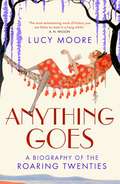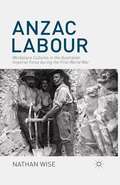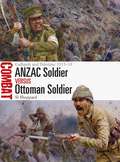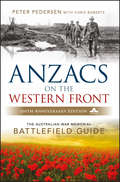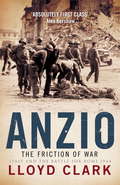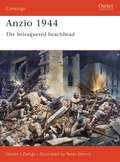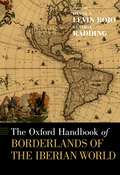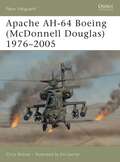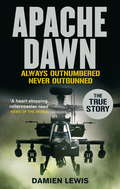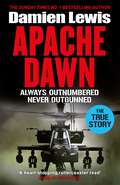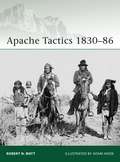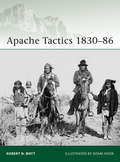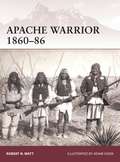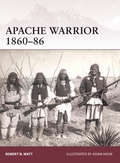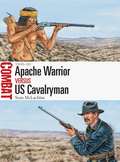- Table View
- List View
Anything Goes: A Biography of the Roaring Twenties
by Lucy MooreBracketed by the catastrophes of the Great War and the Wall Street Crash, 1920s America was a place of drama, tension and hedonism. It glittered and seduced: jazz, flappers, wild all-night parties, the birth of Hollywood, and a glamorous gangster-led crime scene flourishing under prohibition. But the period was also punctuated by momentous events - the political show trials of Sacco and Vanzetti; the huge Ku Klux Klan march down Washington DC's Pennsylvania Avenue - and it produced a splendid array of writers, musicians and film stars, from F. Scott Fitzgerald to Bessie Smith and Charlie Chaplin.
Anyush
by Martine MaddenThe Ottoman Empire, 1915 On the Black Sea coast, Anyush Charcoudian dances at her friend’s wedding, dreaming of a life beyond her small Armenian village. Defying tradition, she embarks on a secret and dangerous affair with a Turkish officer, Captain Jahan Orfalea. As the First World War rages, the Armenian people are branded enemies of the state, and atrocities grow day by day. Torn apart and catapulted into a struggle to survive in the face of persecution and hatred, the lovers strive desperately to be reunited.
Anzac Labour: Workplace Cultures in the Australian Imperial Force during the First World War
by Nathan WiseAnzac Labour explores the horror, frustration and exhaustion surrounding working life in the Australian Imperial Force during the First World War. Based on letters and diaries of Australian soldiers, it traces the history of work and workplace cultures through Australia, the shores of Gallipoli, the fields of France and Belgium, and the Near East.
ANZAC Soldier vs Ottoman Soldier: Gallipoli and Palestine 1915–18 (Combat)
by Si SheppardIn 1915–18, ANZAC and Ottoman soldiers clashed on numerous battlefields, from Gallipoli to Jerusalem. This illustrated study investigates the two sides' fighting men.The Gallipoli campaign of 1915–16 pitched the Australian and New Zealand volunteers known as the ANZACs into a series of desperate battles with the Ottoman soldiers defending their homeland. In August 1915, the bitter struggle for the high ground known as Chunuk Bair saw the peak change hands as the Allies sought to overcome the stalemate that set in following the landings in April. The ANZACs also played a key part in the battle of Lone Pine, intended to divert Ottoman attention away from the bid to seize Chunuk Bair. The Gallipoli campaign ended in Allied evacuation in the opening days of 1916. Thereafter, many ANZAC units remained in the Middle East and played a decisive role in the Allies' hard-fought advance through Palestine that finally forced the Turks to the peace table. The fateful battle of Beersheba in October 1917 pitted Australian mounted infantry against Ottoman foot soldiers as the Allies moved on Jerusalem. In this book, noted military historian Si Sheppard examines the fighting men on both sides who fought at Lone Pine, Chunuk Bair and Beersheba. The authoritative text is supported by specially commissioned artwork and mapping plus carefully chosen archive photographs.
ANZAC Soldier vs Ottoman Soldier: Gallipoli and Palestine 1915–18 (Combat)
by Si SheppardIn 1915–18, ANZAC and Ottoman soldiers clashed on numerous battlefields, from Gallipoli to Jerusalem. This illustrated study investigates the two sides' fighting men.The Gallipoli campaign of 1915–16 pitched the Australian and New Zealand volunteers known as the ANZACs into a series of desperate battles with the Ottoman soldiers defending their homeland. In August 1915, the bitter struggle for the high ground known as Chunuk Bair saw the peak change hands as the Allies sought to overcome the stalemate that set in following the landings in April. The ANZACs also played a key part in the battle of Lone Pine, intended to divert Ottoman attention away from the bid to seize Chunuk Bair. The Gallipoli campaign ended in Allied evacuation in the opening days of 1916. Thereafter, many ANZAC units remained in the Middle East and played a decisive role in the Allies' hard-fought advance through Palestine that finally forced the Turks to the peace table. The fateful battle of Beersheba in October 1917 pitted Australian mounted infantry against Ottoman foot soldiers as the Allies moved on Jerusalem. In this book, noted military historian Si Sheppard examines the fighting men on both sides who fought at Lone Pine, Chunuk Bair and Beersheba. The authoritative text is supported by specially commissioned artwork and mapping plus carefully chosen archive photographs.
ANZACS on the Western Front: The Australian War Memorial Battlefield Guide
by Peter PedersenA newly updated, lavishly illustrated account of the ANZACs involvement in the Western Front—complete with walking and driving tours of 28 battlefields. With rare photographs and documents from the Australian War Memorial archive and extensive travel information, this is the most comprehensive guide to the battlefields of the Western Front on the market. Every chapter covers not just the battles, but the often larger-than-life personalities who took part in them. Following a chronological order from 1916 through 1918, the book leads readers through every major engagement the Australian and New Zealanders fought in and includes tactical considerations and extracts from the personal diaries of soldiers. Anzacs On The Western Front: The Australian War Memorial Battlefield Guide is the perfect book for anyone who wants to explore the battlefields of the Western Front, either in-person or from the comfort of home. It does far more than show where the lines that generals drew on their maps actually ran on the ground and retrace the footsteps of the men advancing towards them. It is a graphic and wide-ranging record of the Australian and New Zealand achievements, and of the huge sacrifices both nations made, in what is still arguably the most grueling episode in their history. A complete guide to the ANZAC battlefields on the Western Front—featuring short essays on important personalities and events, details on relevant cemeteries, museums, memorials and nearby places of interest, and general travel information. Carefully researched and illustrated with colorful maps and both modern and period photographs. Includes information about the Sir John Monash Centre near Villers-Bretonneux in France—a new interpretative museum set to open on Anzac Day 2018, coinciding with the centenary of the Year of Victory 1918. Anzacs On The Western Front: The Australian War Memorial Battlefield Guide is the perfect book for historians, history buffs, military enthusiasts, and Australians and New Zealanders who want to explore the military history and battlefields of their heritage.
ANZACS on the Western Front: The Australian War Memorial Battlefield Guide
by Peter PedersenA newly updated, lavishly illustrated account of the ANZACs involvement in the Western Front—complete with walking and driving tours of 28 battlefields. With rare photographs and documents from the Australian War Memorial archive and extensive travel information, this is the most comprehensive guide to the battlefields of the Western Front on the market. Every chapter covers not just the battles, but the often larger-than-life personalities who took part in them. Following a chronological order from 1916 through 1918, the book leads readers through every major engagement the Australian and New Zealanders fought in and includes tactical considerations and extracts from the personal diaries of soldiers. Anzacs On The Western Front: The Australian War Memorial Battlefield Guide is the perfect book for anyone who wants to explore the battlefields of the Western Front, either in-person or from the comfort of home. It does far more than show where the lines that generals drew on their maps actually ran on the ground and retrace the footsteps of the men advancing towards them. It is a graphic and wide-ranging record of the Australian and New Zealand achievements, and of the huge sacrifices both nations made, in what is still arguably the most grueling episode in their history. A complete guide to the ANZAC battlefields on the Western Front—featuring short essays on important personalities and events, details on relevant cemeteries, museums, memorials and nearby places of interest, and general travel information. Carefully researched and illustrated with colorful maps and both modern and period photographs. Includes information about the Sir John Monash Centre near Villers-Bretonneux in France—a new interpretative museum set to open on Anzac Day 2018, coinciding with the centenary of the Year of Victory 1918. Anzacs On The Western Front: The Australian War Memorial Battlefield Guide is the perfect book for historians, history buffs, military enthusiasts, and Australians and New Zealanders who want to explore the military history and battlefields of their heritage.
ANZACS on the Western Front: The Australian War Memorial Battlefield Guide
by Peter PedersenA lavishly illustrated account of the ANZACs involvement in the Western Front--complete with walking and driving tours of 28 battlefields With rare photographs and documents from the Australian War Memorial archive and extensive travel information, this is the most comprehensive guide to the battlefields of the Western Front on the market. Every chapter covers not just the battles, but the often larger-than-life personalities who took part in them. Following a chronological order from 1916 through 1918, the book leads readers through every major engagement the Australian and New Zealanders fought in and includes tactical considerations and extracts from the personal diaries of soldiers. This is the perfect book for anyone who wants to explore the battlefields of the Western Front, either in-person or from the comfort of home.
ANZACS on the Western Front: The Australian War Memorial Battlefield Guide
by Peter PedersenA lavishly illustrated account of the ANZACs involvement in the Western Front--complete with walking and driving tours of 28 battlefields With rare photographs and documents from the Australian War Memorial archive and extensive travel information, this is the most comprehensive guide to the battlefields of the Western Front on the market. Every chapter covers not just the battles, but the often larger-than-life personalities who took part in them. Following a chronological order from 1916 through 1918, the book leads readers through every major engagement the Australian and New Zealanders fought in and includes tactical considerations and extracts from the personal diaries of soldiers. This is the perfect book for anyone who wants to explore the battlefields of the Western Front, either in-person or from the comfort of home.
Anzio: The Friction Of War
by Lloyd ClarkThis is the story of the Anglo-American amphibious assault and subsequent battle on the Italian west coast at Anzio which was launched in January 1944 in a bold attempt to outflank the formidable German defences known as the 'Gustav Line'. ANZIO - THE FRICTION OF WAR outlines the strategic background to the offensive before detailing the landing, the development of an Allied defensive position, the battles in and around the perimeter, the stalemate, the breakout and the capture of Rome on 4 June 1944. While assessing the events at Anzio with the eye of an experienced military historian, Lloyd Clark also examines in detail the human response to the battle from high command to foot soldier. He also emphasises the German story - the first time this has ever been done.
Anzio 1944: The beleaguered beachhead (Campaign)
by Peter Dennis Steven J. ZalogaIn January 1944, the Allies decided to land at Anzio in order to overcome the stalemate at Cassino.This amphibious landing has become one of the most controversial campaigns of World War II. Questionable decisions by the Allied leadership led to three months of World War I-style trench warfare, and the entire beachhead suffered from continuous German observation and bombardment. Vividly describing each thrust and counter-thrust, this book takes us through the agonizing struggle as each side sought to retain or regain mastery. It shows how Anzio proved to be a stepping stone not only to Rome but also to the liberation of Italy.
Anzio 1944: The beleaguered beachhead (Campaign #155)
by Peter Dennis Steven J. ZalogaIn January 1944, the Allies decided to land at Anzio in order to overcome the stalemate at Cassino.This amphibious landing has become one of the most controversial campaigns of World War II. Questionable decisions by the Allied leadership led to three months of World War I-style trench warfare, and the entire beachhead suffered from continuous German observation and bombardment. Vividly describing each thrust and counter-thrust, this book takes us through the agonizing struggle as each side sought to retain or regain mastery. It shows how Anzio proved to be a stepping stone not only to Rome but also to the liberation of Italy.
The AOxford Handbook of Borderlands of the Iberian World (Oxford Handbooks)
by Cynthia Radding Danna A. Levin RojoThis collaborative multi-authored volume integrates interdisciplinary approaches to ethnic, imperial, and national borderlands in the Iberian World (16th to early 19th centuries). It illustrates the historical processes that produced borderlands in the Americas and connected them to global circuits of exchange and migration in the early modern world. The book offers a balanced state-of-the-art educational tool representing innovative research for teaching and scholarship. Its geographical scope encompasses imperial borderlands in what today is northern Mexico and southern United States; the greater Caribbean basin, including cross-imperial borderlands among the island archipelagos and Central America; the greater Paraguayan river basin, including the Gran Chaco, lowland Brazil, Paraguay, and Bolivia; the Amazonian borderlands; the grasslands and steppes of southern Argentina and Chile; and Iberian trade and religious networks connecting the Americas to Africa and Asia. The volume is structured around the following broad themes: environmental change and humanly crafted landscapes; the role of indigenous allies in the Spanish and Portuguese military expeditions; negotiations of power across imperial lines and indigenous chiefdoms; the parallel development of subsistence and commercial economies across terrestrial and maritime trade routes; labor and the corridors of forced and free migration that led to changing social and ethnic identities; histories of science and cartography; Christian missions, music, and visual arts; gender and sexuality, emphasizing distinct roles and experiences documented for men and women in the borderlands. While centered in the colonial era, it is framed by pre-contact Mesoamerican borderlands and nineteenth-century national developments for those regions where the continuity of inter-ethnic relations and economic networks between the colonial and national periods is particularly salient, like the central Andes, lowland Bolivia, central Brazil, and the Mapuche/Pehuenche captaincies in South America. All the contributors are highly recognized scholars, representing different disciplines and academic traditions in North America, Latin America and Europe.
AP U.S. History For Dummies
by Greg VelmGetting ready to tackle the AP U.S. History exam? AP U.S. History For Dummies is a practical, step-by-step guide that will help you perfect the skills and review the knowledge you need to achieve your best possible score! Discover how to identify what the questions are really asking and find out how to combine your history knowledge with context clues to craft thoughtful essays. Try your hand at two true-to-life AP exams, complete with detailed answer explanations and scoring guides. You’ll find out how to put together a game plan, develop a study strategy, decode the Political – Economic – Social (PES) answer secret, and understand exactly what’s going to be on the stress. This easy-to-understand guide reviews all periods of U.S. history, from the country’s earliest inhabitants to the present day. Ease your mind on stress day and feel completely prepared by completing the two practice exams with answers and explanations. Find out how to: Prepare a study plan for the time leading up to the exam Decode your score and learn how to get the best score Put your knowledge to work Approach the different types of questions: multiple choice, document-based, and essay questions Navigate all exam topics, from the Native Americans to the present day Analyze and connect political, economic, and social themes Recognize trick words Complete with lists of ten monster event topics AP wants you to know, ten unstoppable cultural trends, and ten key court decisions, AP U.S. History For Dummies will help you ace this test!
Apache AH-64 Boeing (New Vanguard #111)
by Chris BishopThe Boeing (McDonnell Douglas, formerly Hughes) AH-64A Apache is the US Army's primary attack helicopter, and the most advanced helicopter gunship flying today. The most expensive rotary-winged aircraft ever built when it was introduced in the early 1980s, it has since proved its worth on battlefields all over the world, seeing action in the Gulf War, Afghanistan, Bosnia, Kosovo and the recent conflict in Iraq. This book examines the design, development and deployment of a quick-reacting, airborne weapons system that can fight close and deep to destroy, disrupt, or delay enemy forces.
Apache Dawn: Always outnumbered, never outgunned.
by Damien LewisThe Apache attack helicopter is the British Army's most awesome weapons system. Deployed for the first time in Afghanistan, it has already passed into legend. The only thing more incredible than the Apache itself are the pilots that fly her. For the first time, Apache Dawn tells their story - and their baptism of fire in the unforgiving battle of Helmand province. Their call-sign was 'Ugly' - and there was no better word for the gruelling 100-day deployment they endured. Day after day, four of the Army Air Corps' finest pilots flew right into the heart of the battle, testing their aircraft to the very limit. Apache Dawn takes the reader with them on a series of unrelenting and brutally intense combat missions, from daring, edge-of-the-seat rescues to dramatic close-air support in the white heat of battle.Bestselling author Damien Lewis has been given unprecedented access to these heroic aircrews and to the men on the ground whose lives they saved. It is an astounding story of bravery, skill and resilience in the face of unbelievable odds. And it is the story of the Apache itself - the ultimate fighting machine.
Apache Dawn: Always Outnumbered, Never Outgunned
by Damien Lewis'Damien Lewis is both a meticulous historian and a born storyteller' Lee ChildIn the summer of 2007 the British Army's 662 Squadron deployed its most potent weapons system in combat for the very first time - the iconic Apache attack helicopter. This is the definitive story of the aircraft and of the crew who fly her, and of their baptism of fire in the battle for Helmand Province, Afghanistan. Under the call-sign Ugly, four of the Army Air Corps' finest pilots flew a relentless series of missions during their 100-day deployment, stretching the aircraft, and themselves, to the limit. Apache Dawn recounts these operations from the perspective of the aircrew, plus the soldiers on the ground who owe their lives to the Apaches' intervention during the white-hot heat of battle. Bestselling author Damien Lewis has been given unprecedented access to the pilots of the Apache Attack Squadrons - an elite band of warriors operating at the very limits of modern warfare. Apache Dawn is their story, and it is one of untold bravery and resilience against all odds.'As good as any thriller I have ever read' Freddie Forsyth'Reveals a true story of British courage and daring' The Sunday Times'Riveting' Richard & Judy Show'The most dramatic story of a secret wartime mission ever' News of the World
Apache Fire (Mills & Boon Vintage 90s Modern)
by Elizabeth LaneA dangerous man lay near death at Rose Colby's feet - and though logic told her to flee from the unpredictable half-breed, instinct whispered a different tale.
Apache Tactics 1830–86 (Elite)
by Adam Hook Robert N. WattThe Apache culture of the latter half of the 19th century blended together the lifestyles of the Great Plains, Great Basin and the South-West, but it was their warfare that captured the imagination. This book reveals the skilful tactics of the Apache people as they raided and eluded the much larger and better-equipped US government forces. Drawing on primary research conducted in the deserts of New Mexico and Arizona, this book reveals the small-unit warfare of the Apache tribes as they attempted to preserve their freedom, and in particular the actions of the most famous member of the Apache tribes – Geronimo.
Apache Tactics 1830–86 (Elite #119)
by Mr Adam Hook Robert N. WattThe Apache culture of the latter half of the 19th century blended together the lifestyles of the Great Plains, Great Basin and the South-West, but it was their warfare that captured the imagination. This book reveals the skilful tactics of the Apache people as they raided and eluded the much larger and better-equipped US government forces. Drawing on primary research conducted in the deserts of New Mexico and Arizona, this book reveals the small-unit warfare of the Apache tribes as they attempted to preserve their freedom, and in particular the actions of the most famous member of the Apache tribes – Geronimo.
Apache Warrior 1860–86 (Warrior)
by Adam Hook Robert N. WattThe idea of an Apache warrior still evokes a stereotyped response; that of an elusive, cunning, ferocious and cruel fighter. Focusing on the Chiricahua Apache, led by such famous warriors as Cochise Mangas Coloradas, Victorio, Nana and Geronimo, this book explains how their upbringing, training and culture equipped them uniquely for survival in the harsh environment of New Mexico and Arizona, and enabled them to fight off their Mexican and American enemies for so long. Specially commissioned, full-colour illustrations featuring 'exploded' kit scenes and battle artwork complement meticulous research that seeks to strip away the myths behind the history of some of the most feared opponents of the US Army in the south-west United States.
Apache Warrior 1860–86 (Warrior)
by Mr Adam Hook Robert N. WattThe idea of an Apache warrior still evokes a stereotyped response; that of an elusive, cunning, ferocious and cruel fighter. Focusing on the Chiricahua Apache, led by such famous warriors as Cochise Mangas Coloradas, Victorio, Nana and Geronimo, this book explains how their upbringing, training and culture equipped them uniquely for survival in the harsh environment of New Mexico and Arizona, and enabled them to fight off their Mexican and American enemies for so long. Specially commissioned, full-colour illustrations featuring 'exploded' kit scenes and battle artwork complement meticulous research that seeks to strip away the myths behind the history of some of the most feared opponents of the US Army in the south-west United States.
Apache Warrior vs US Cavalryman: 1846–86 (Combat)
by Adam Hook Sean McLachlanFrom the 1840s onward, United States military forces clashed with the Apache, a group of Native American peoples associated with the southwestern part of North America. US territorial expansion and conflict – first with Mexico and then during the Civil War – led to an escalation of hostilities that culminated in the defeat of the Apache leader Geronimo in 1886, although fighting continued into the 20th century. In this study the clashes at Cieneguilla (1854), First Adobe Walls (1864), and Cibecue Creek (1881) are assessed in detail.Fully illustrated and featuring contemporary accounts and specially commissioned artwork, this history examines exactly how the Apache were able to pose such a grave threat to US forces and how their initial advantages were gradually negated by the cavalry. Examining the tactics, equipment and training available to each side over four decades of evolving conflict, this is an eye-opening combatant's eye view of one of history's most intriguing campaigns.
Apache Warrior vs US Cavalryman: 1846–86 (Combat)
by Mr Adam Hook Sean McLachlanFrom the 1840s onward, United States military forces clashed with the Apache, a group of Native American peoples associated with the southwestern part of North America. US territorial expansion and conflict – first with Mexico and then during the Civil War – led to an escalation of hostilities that culminated in the defeat of the Apache leader Geronimo in 1886, although fighting continued into the 20th century. In this study the clashes at Cieneguilla (1854), First Adobe Walls (1864), and Cibecue Creek (1881) are assessed in detail.Fully illustrated and featuring contemporary accounts and specially commissioned artwork, this history examines exactly how the Apache were able to pose such a grave threat to US forces and how their initial advantages were gradually negated by the cavalry. Examining the tactics, equipment and training available to each side over four decades of evolving conflict, this is an eye-opening combatant's eye view of one of history's most intriguing campaigns.
Apartheid: A Documentary Study of Modern South Africa (Routledge Library Editions: South Africa #2)
by Edgar H. BrookesOriginally published in 1968, this volume traces the history and growth of Apartheid in South Africa. The acts which enforced Apartheid – the Group Areas Act, Population and Registration Act are given in full. The book also includes documents which reflected reaction to these measures: Parliamentary debates, newspaper reports and policy statements by the leading political parties and religious denominations. The documents are headed by a full historical and analytical introduction.
